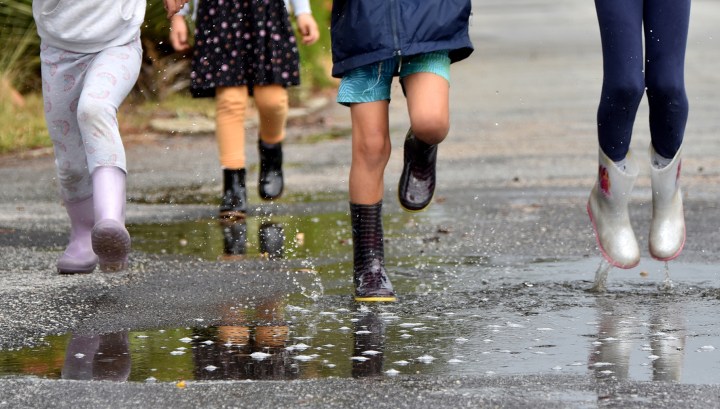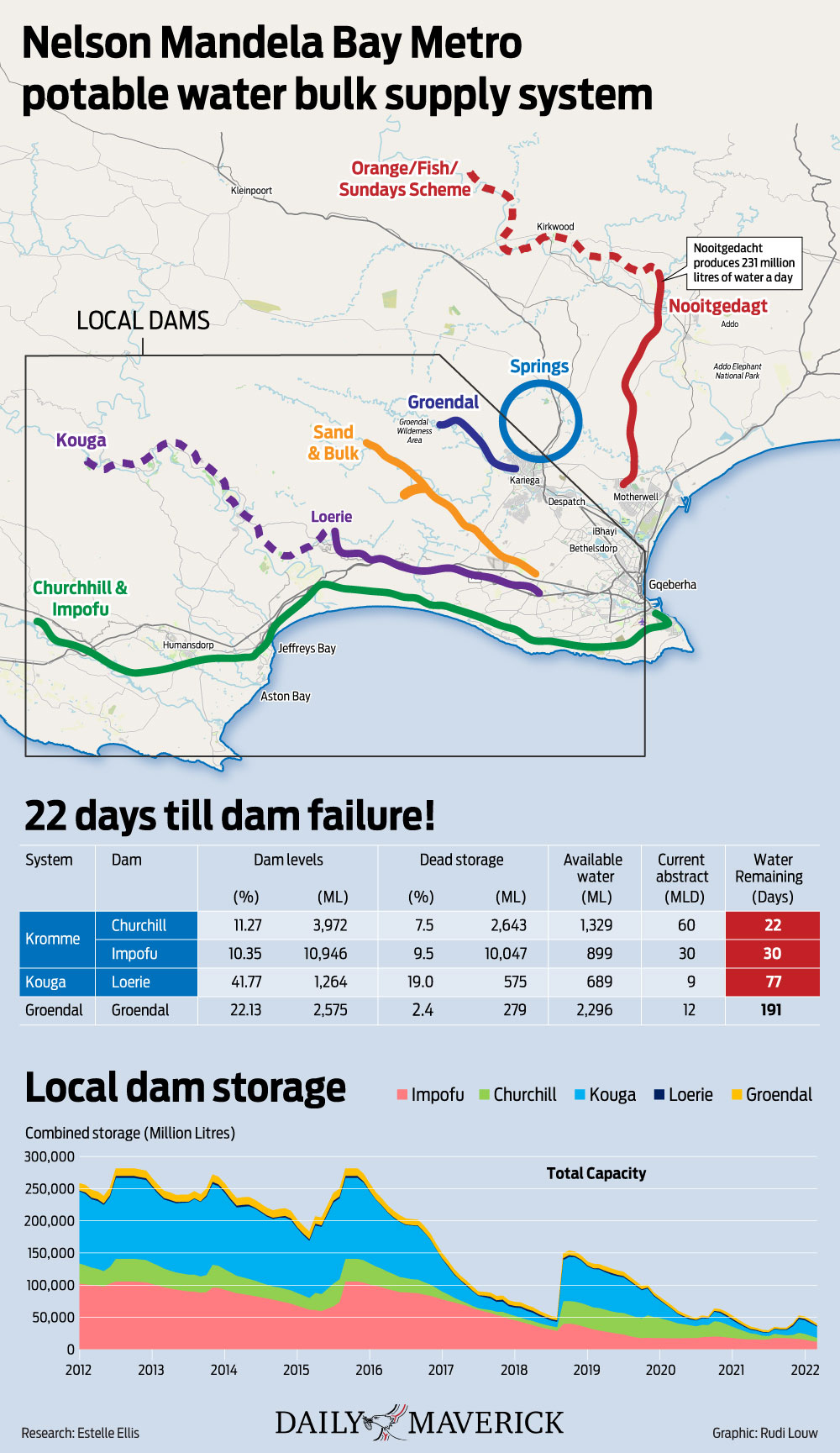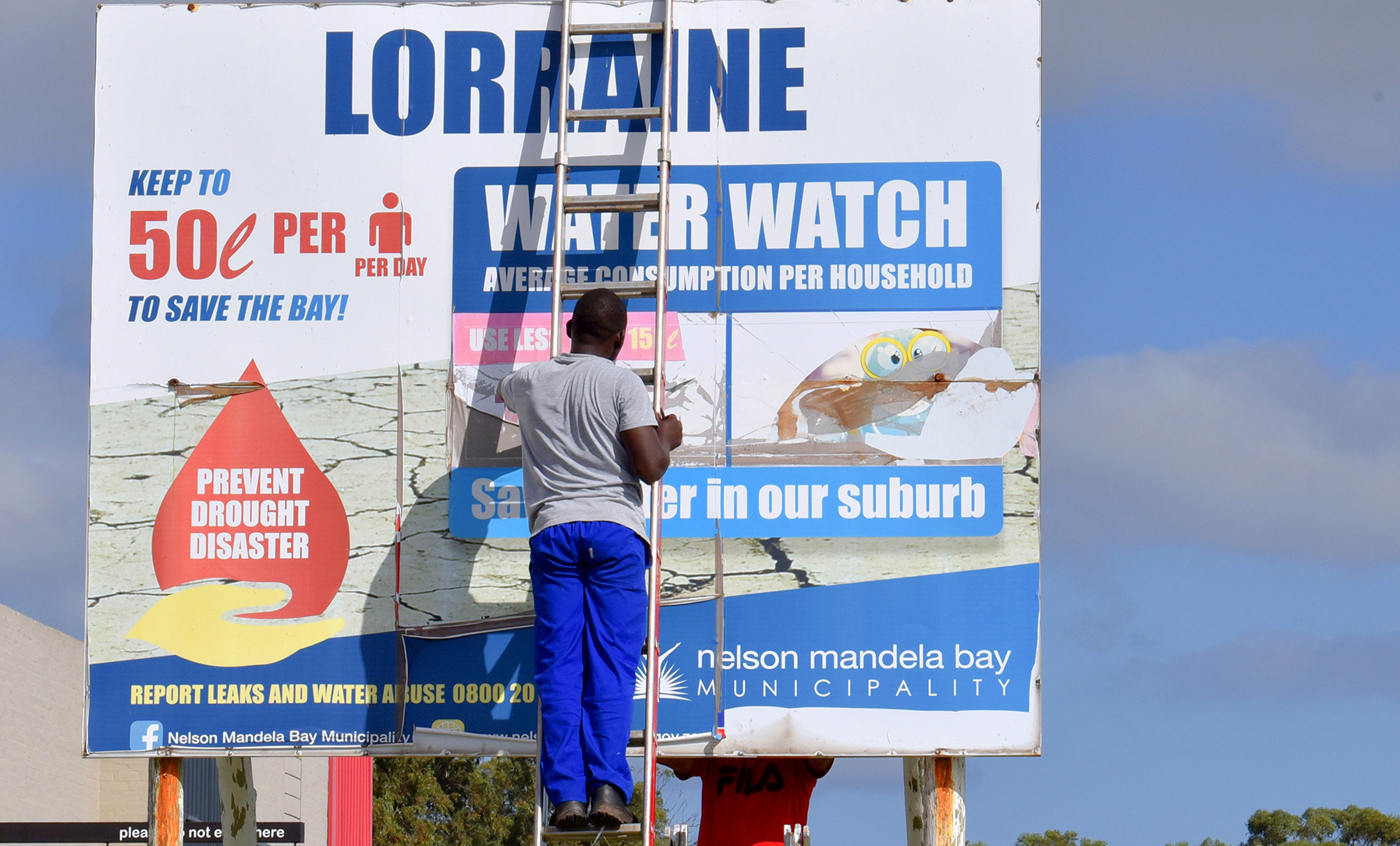22: COUNTDOWN TO CATASTROPHE
Weekend rains weren’t enough to stave off Day Zero in Nelson Mandela Bay in just three weeks

Welcome rain fell in the catchment areas for Nelson Mandela Bay’s dams at the end of last week and over the weekend, but this did little to improve the metro’s critical water situation.
While recent rainfall figures indicate that residents of the Nelson Mandela Bay municipality might have gained a little grace in the countdown to the failure of its supply dams, the metro said on Monday there were only 22 days before taps ran dry.
It is estimated that 107 suburbs, townships and areas in the metro will run out of water within three weeks, when access to the dams is lost. These include some of the metro’s most densely populated areas.
Municipal officials are counting on the public to restrict water use to 50 litres per person per day to delay the impending disaster so that access to some water from the dams can be retained.
Two pump stations will increase capacity, but these will be completed only in September, as will several borehole projects.
The metro is in its seventh year of a devastating drought and in January recorded its driest month yet. The area needs between 50mm and 100mm of rainfall in a short time to move out of danger.

Nelson Mandela Bay Metro potable water bulk supply system. (Graphic: Rudi Louw)
In three weeks, the Churchill Dam is predicted to run dry, followed by the Impofu Dam a few days later. This will leave the city mostly reliant on the Nooitgedacht scheme, a system with no reserves and one that is affected by load shedding.
The Gariep Dam, on the border of the Free State and the Eastern Cape, is presently overflowing, but water supply from here will be limited.
ANC’s policy document wish list may yet alter South Africa’s future for the better
Almost 40% of the metro will soon be without water
The dams supplying this mostly urban area of 1.5 million people have only about 12.4% of usable water left. Almost 40% of the metro will soon be without water or will have limited water.
While the metro is allowed to take water from the Loerie Dam, which is fed by the Kouga Dam, it has already exceeded its annual quota.
Garth Sampson from the SA Weather Service said the recent rain “might extend Day Zero by a week or so”. He said no significant rain was predicted for the area in the next five days.
According to official rainfall figures, a total of 40mm was measured at Joubertina, 26mm at Kareedouw, 37mm at Kouga Dam and 24mm at Patensie after the recent showers.

Nelson Mandela Bay municipal workers prepare a water use warning billboard in Circular Drive, Lorraine. (Photo: Deon Ferreira)
The Department of Water and Sanitation did not issue figures for dam levels on Monday.
The Gamtoos Irrigation Board, which manages the water in the Kouga and Loerie dams, said Kouga was at 12.7% capacity on Monday, the Churchill Dam was at 12.3% (lower than last week’s 13.3%) and the Impofu Dam stood at 10.5%.
According to the metro’s official water dashboard, the Churchill Dam had 22 days of water left on Monday. The Impofu Dam had 30 days and the Kouga/Loerie system had 77 days to go.
According to the municipality, 1,623 water leaks were fixed last week and the council is behind on 3,257 complaints of leaks. DM/MC
[hearken id=”daily-maverick/9472″]



















 Become an Insider
Become an Insider
If I were president for a week, then on Monday I would issue some Presidential Decrees to significantly reduce financial shenanigans. This would give me billions to deal with water on Tuesday. In the morning start a project whereby we replace every waterpipe from every dam to the very last tap. When I read that every waterboard has “non revenue water ” between 42 and47% due to leaks and ageing infrastructure, its a low hanging fruit. This will generate enormous employment opportunities for low to highly skilled persons whilst effectively dealing with a major crises . The manufacture, transportation ,trenching, installing and connecting of new pipes would all require great numbers of people. Living wages will be paid partly funded by savings made on grants no longer needed. The installation of the fibre network serves as an example of the practical feasibility. Once completed we will almost double the available water which creates new opportunities all of its own. One caveat, prevent project creep at all cost, just replace the pipes. No diverging from the objective. Then in the afternoon we launch a project whereby we interconnect all major storage dams so that excess water in one area can be pumped to where its needed. Yes challenging and expensive but no alternative. Those who think that bribery etc will kill it, revisit Mondays Decrees and think again.
Surely the priority should be name change. The Churchill Dam has unpleasant colonial connotations. Why isn’t a referendum organised to agree upon a new Africanised name for the dam?
Whilst stemming water loss is a laudable idea, I think we should get priorities right!
There is either a lack of mathematicians, or those who are able to do some lateral thinking in the Eastern Cape. And certainly there are none familiar with the old Afrikaner saying, een boer zal een plan maak.
According to Google the annual rainfall in PE is 625mm. On a 100 m2 roof that means that 62 kl of water falls, enough for an average family for a whole year; plenty all summer, tight squeeze at the end of winter. Virtually all of it runs into the sea.
Faced with the same problem in KZN we took a tip from the masters of water management, the Hollanders, we built an underground reservoir costing R15,000 ten years ago. For only two months in that period, and the height of two droughts have we needed to use municipal water. For the rest we have ample, pristine water for all our needs.
We have beating the drum for five years but South Africans’ ears are stopped. The government must provide…. but the government can’t and won’t provide. So they must go without. As the Dutch say, “those who will not hear, must feel.”
https://www.bernard-preston.com/Rainwater-harvesting-model.html